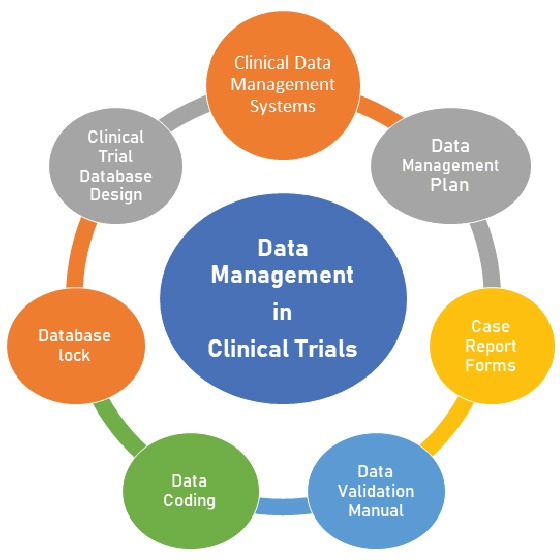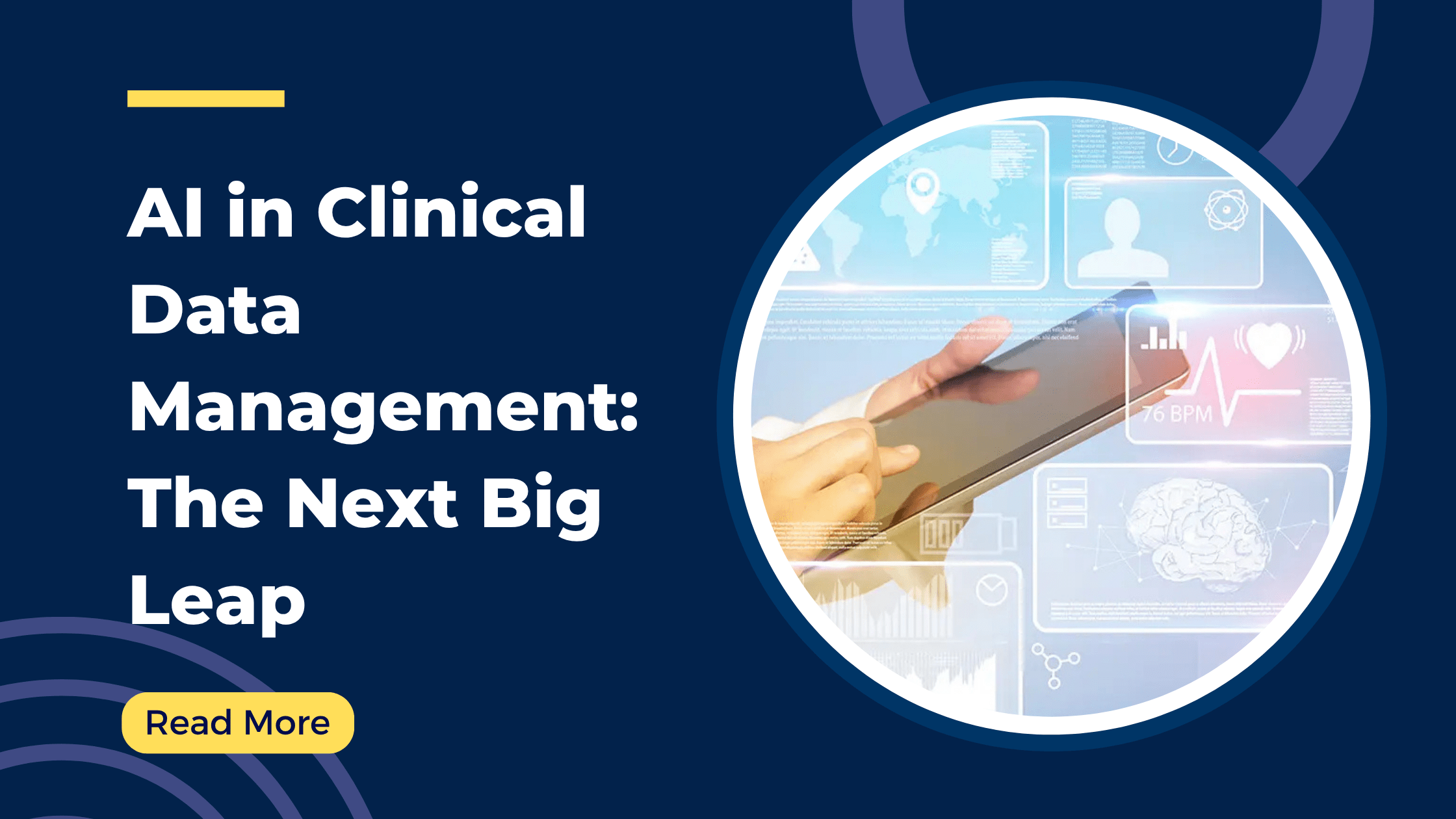Next-Gen Clinical Data Management: From EDC to AI-Driven Real-Time Insights
In today’s fast-moving life sciences landscape, AI in Clinical Data Management (CDM) is transforming how clinical trials handle, interpret, and act on data. Gone are the days when Electronic Data Capture (EDC) systems marked the peak of efficiency. The industry is now transitioning into an era of AI-driven, real-time insights, where automation and analytics empower sponsors, CROs, and investigators to make faster, more informed decisions.
The evolution of digital tools has reshaped the role of every Clinical Reasearch Organization in India, pushing them toward smarter and more connected data ecosystems.
This evolution, from EDC foundations to next-generation Clinical Data Management systems, is transforming how data is collected, processed, and interpreted. It’s not just about technological progress but a strategic shift that enhances data quality, accelerates study timelines, and strengthens patient safety across every stage of a clinical trial.
The Evolution: From Paper to EDC to AI
Not too long ago, clinical data was collected and managed using paper-based Case Report Forms (CRFs). These methods were time-consuming, error-prone, and required significant manual verification. The introduction of Electronic Data Capture (EDC) systems marked a monumental shift. EDC streamlined data entry, reduced transcription errors, and improved the efficiency of data collection.
However, as clinical trials became more complex — involving multiple sites, adaptive designs, and diverse patient populations — traditional EDC platforms began to reach their limits. They were designed primarily for structured data and static workflows, not for the massive, multi-dimensional datasets emerging from modern trials.
That’s where AI in Clinical Data Management comes in. By integrating Artificial Intelligence (AI), Machine Learning (ML), and real-time analytics, next-generation systems can now automatically clean, analyze, and interpret data at unprecedented speeds. This evolution is not just about faster processing; it’s about transforming data into actionable insights in real time.
Why Traditional EDC Systems Are No Longer Enough
While Electronic Data Capture (EDC) remains the cornerstone of many clinical data workflows, several limitations have become apparent:
Static Workflows – EDC systems are typically rule-based, requiring manual setup for edit checks, queries, and validations. This rigidity slows down adaptive or decentralized trials.
Lack of Data Integration – Traditional EDC systems struggle to connect with other platforms like CTMS, ePRO, or wearables, leading to siloed data and delayed insights.
Manual Cleaning – A significant amount of time is still spent on data cleaning and query resolution, delaying interim analyses.
Limited Predictive Power – Traditional systems provide retrospective analysis; they do not predict risks or anomalies before they occur.
The next generation of Clinical Data Management systems addresses these pain points through automation, integration, and intelligence.


AI-Driven Real-Time Insights: The Future of Data Management
AI-driven Clinical Data Management platforms bring agility and intelligence into the heart of data operations. Let’s explore how they transform clinical trial data management:
1. Automated Data Cleaning and Validation
AI and ML algorithms can detect outliers, inconsistencies, and potential errors automatically. Instead of predefined edit checks, these systems learn from historical data to identify anomalies dynamically. This reduces manual effort and ensures cleaner data faster.
2. Predictive Risk Monitoring
Machine learning models can predict site performance issues, protocol deviations, or patient dropouts before they happen. This enables proactive risk management, a key principle in Risk-Based Monitoring (RBM) and Risk-Based Quality Management (RBQM).
3. Real-Time Data Integration
Next-gen Clinical Data Management systems integrate diverse data sources — from EDC, ePRO, laboratory data, and wearables — into a unified dashboard. Real-time visualization enables sponsors and CROs to make data-driven decisions instantly.
This seamless integration supports Pharmacovigilance and Drug Safety Services by enabling early signal detection and faster safety reporting.
4. Natural Language Processing (NLP) for Unstructured Data
Much of clinical data resides in unstructured formats like physician notes and patient narratives. AI in Clinical Data Management uses NLP to extract valuable insights from this data, enriching analysis and improving decision-making.
5. Enhanced Patient Safety and Compliance
AI systems continuously monitor adverse event data, lab results, and safety signals, alerting teams to potential risks early. Automated compliance tracking ensures all data aligns with ICH-GCP, 21 CFR Part 11, and GDPR regulations.
The Benefits of Next-Gen Data Management
Implementing AI in Clinical Data Management provides tangible benefits for all stakeholders in a clinical trial:
For Sponsors: Faster decision-making, reduced time to market, and lower operational costs.
For CROs: Streamlined workflows, improved data quality, and enhanced client satisfaction.
For Sites: Simplified data entry and monitoring, enabling greater focus on patient care.
For Patients: Improved safety monitoring and a better clinical trial experience.
Ultimately, AI-driven insights turn data into a strategic asset — driving innovation, ensuring compliance, and strengthening competitive advantage.
Integrating AI Into Existing Data Ecosystems
Transitioning from traditional EDC to AI-driven Clinical Data Management platforms doesn’t happen overnight. The key is integration, not replacement. Many organizations are adopting hybrid models, where AI tools augment existing EDC systems by automating specific tasks such as data cleaning or anomaly detection.
To ensure success:
Assess Data Readiness: Standardize and validate legacy data for AI compatibility.
Select the Right Technology Partners: Choose vendors that offer AI tools compatible with your EDC or CTMS infrastructure.
Invest in Data Governance: Define clear data access, security, and compliance processes.
Upskill Teams: Train staff to interpret and apply AI-generated insights effectively.
Regulatory and Ethical Considerations
While AI in Clinical Data Management offers immense potential, regulatory compliance and ethical oversight remain critical. Agencies like the FDA and EMA are increasingly open to AI-based clinical trial methodologies but emphasize transparency, validation, and data integrity.
AI models must be explainable, ensuring that every prediction is traceable. Data privacy must also be maintained at every step, especially when integrating patient-reported outcomes or wearable data. As AI evolves, collaboration between technology providers, sponsors, and regulators will be key to maintaining trust.
The Road Ahead: Toward Intelligent Clinical Data Ecosystems
The future of Clinical Data Management lies in continuous, connected intelligence. As AI and machine learning evolve, data systems will become increasingly autonomous — capable of identifying trends, predicting outcomes, and recommending actions with minimal human intervention.
Emerging trends like Generative AI, blockchain for data traceability, and digital twins are shaping this future. Imagine a world where trial simulations, automated patient matching, and real-time regulatory submissions happen seamlessly — this is the promise of next-generation Clinical Data Management.
Conclusion
The journey from EDC systems to AI-driven, real-time insights represents a pivotal shift in the clinical research landscape. As trials become more complex and data volumes grow, the need for AI in Clinical Data Management becomes undeniable.
At Abiogenesis Clinpharm, we combine advanced AI-driven Clinical Data Management technologies with deep clinical expertise to deliver faster, more accurate, and compliant trials.
Looking for a reliable Clinical Research Organization (CRO) for your next study?
📧 Contact us at [email protected] or visit www.abiogenesisclinpharm.com.

